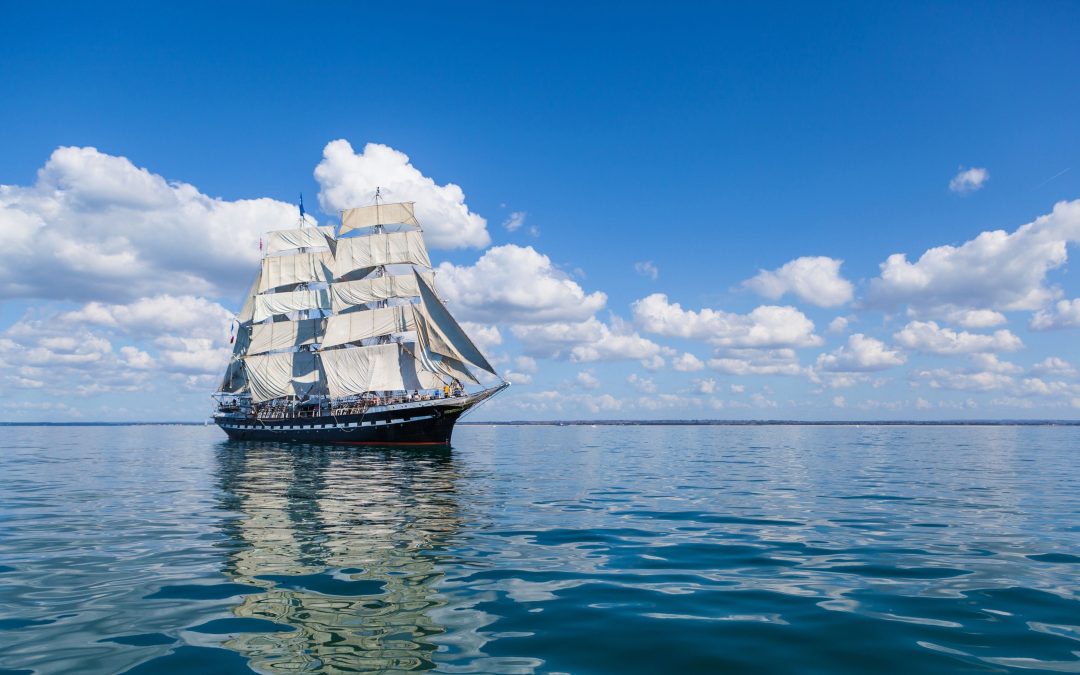When Dr Dmitriy Ponkratov, a founder of the JoRes Joint Research project and currently a Marine Director at Siemens Digital Industries Software, was boarding a plane in 2020 and downloading some old journal articles in the airport to entertain himself while flying, he did not know that he would find a missing part to unlock new opportunities for future digitalisation of maritime industry.
Determining a ship’s resistance at full scale is crucial for designing energy-efficient vessels. Ship resistance prediction at full scale traditionally relies on the International Towing Tank Conference (ITTC) recommended procedure, which has its roots in towing tank model scale tests. Despite being today’s best practice and widely utilised procedure, the procedure relies on several old assumptions that may introduce uncertainties to full-scale resistance prediction.
The 21st century has completely changed the digital environment. We can develop digital twins of many valuable assets, such as aeroplanes, ships, factories, and shipyards. Arash Eslamdoost, associate professor in Applied Hydrodynamics at Chalmers University of Technology, says, “Recent advancements in Computational Fluid Dynamics (CFD), as part of digital transformation, offer an exciting alternative to revisit the ITTC procedure. CFD enables direct resistance prediction at full scale, avoiding the uncertainties involved in extrapolating the model scale resistance to full scale. This approach not only can significantly improve the accuracy and reliability of ship resistance predictions but also can provide more information about the flow details around a full-scale ship. However, before CFD can be fully adopted for full-scale resistance predictions, it must be validated through comparison with full-scale resistance measurements, which are rare.”
Recently, a few test campaigns were performed within the JoRes project on actual seagoing vessels to develop test cases for real-scale CFD validation. Even though these test cases reflect the actual operation conditions, they do not allow decoupling force components from the hull and propeller. Ideally, it would be beneficial to have an opportunity to measure vessel resistance without operating propeller to understand the flow around the hull undisturbed by a propeller. The challenge is how to do it. The most straightforward answer is to tow a vessel by another vessel. Even though these towing experiments were performed a few times in the past, another challenge arose: the subject vessel is sailing in the wake of the towing vessel, not in the open sea, so there is no uniform undisturbed flow coming to the subject vessel.
If two tugboats tow the subject vessel, the waves generated by the tugboats will again interfere with the waves of the subject vessel, spoiling the wave pattern and, hence, wave resistance.
“For many years, I thought it is an unsolvable puzzle, and we need more time to come up with a practical solution to that”, says Dr Ponkratov. “I was astonished when we realised that solution actually lies in the past, not the future!” he adds. “When Dmitriy told me he had found this case, it was clear it formed a unique opportunity to validate full-scale resistance predictions made by CFD,” professor Rickard Bensow of Chalmers comments’.
Most likely, the engineers at BSRA (British Ship Research Association) brainstormed together around 1950, discussing possible solutions like the towing experiments mentioned before. We do not know who exactly came up with such an elegant solution (they were a genius for sure!) to call the Rolls Royce company and check whether they could get four jet engines from aeroplanes to install on a vessel. And the answer was positive! BSRA acquired an old paddle steamer, Lucy Ashton, built in 1888 and transformed her into the first and only research vessel equipped with jet engines! Moreover, BBC sound engineers helped to build a soundproof wheelhouse to address the noise issue for the crew.
Another elegant solution was required for speed control: if the jet engines do not have a reverse option, how can an emergency stop be performed? To address this challenge, a remarkable solution was found: hand brakes! Two flaps could literally be submerged in the water to slow down the vessel.
These great experiments significantly contributed to maritime science and were recognised by the ITTC (International Towing Tank Conference) at that time. However, it seems it was a too-long gap until the 1990s when Digital Technologies and Computational Fluid Dynamics started to develop. Unfortunately, it is believed there were no people around who participated or heard about the unique Lucy Ashton case. Otherwise, we are sure this test case could be used for CFD validation in the early stages.
Luckily, the information about Lucy Ashton came to the surface again in 2020, allowing researchers to develop a new validation test case for full-scale CFD. In 2024, the Chalmers University of Technology launched a global workshop to calculate and validate various CFD codes by comparing the CFD results with actual measurements performed in 1950.
Dr Rui Lopes, a postdoc at Chalmers University, says: ” When we announced the workshop, we expected a dozen of companies to confirm their participation. We were surprised that 79 companies showed their interest. We received submissions from 46 companies from over 20 countries, which made this workshop the largest in the maritime community! Our plan is to organise a one-day in-person workshop at Chalmers in Gothenburg, Sweden, on 25 September 2024 to discuss the results. If you would like to attend the free event, please get in touch with us (rui.lopes@chalmers.se, arash.eslamdoost@chalmers.se )”
It is really inspiring that a vessel that carried passengers on the Clyde between 1888 and 1949 (she was one of the longest-serving Clyde steamers) suddenly obtained her afterlife in the digital world. This will help engineers validate modern digital tools that will be used to design future generations of ships.
Source: Siemens Digital Industries Software






